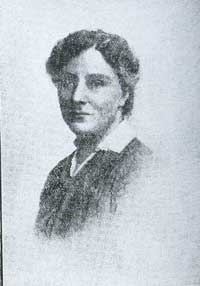Frances (1843-1919) and Eunice Murray (1878-1960)
 Frances Murray met Harriet Beecher Stowe in 1867. This was her first introduction to women’s rights. She became a suffragist much later. In 1917 she wrote in defence of the Victorians, noting that in her youth there was little higher education and few careers open to women:
Frances Murray met Harriet Beecher Stowe in 1867. This was her first introduction to women’s rights. She became a suffragist much later. In 1917 she wrote in defence of the Victorians, noting that in her youth there was little higher education and few careers open to women:
“The Victorian era burst through this bondage and now we have schools and colleges”.
She looked forward to fulfilment of sex equality.
Eunice joined the NUWSS in 1896 and then the WFL along with Frances and sister Sylvia in 1908. Theresa Billington-Greig asked her to ascertain views on Women’s suffrage in Cardross (where she lived). The response was so discouraging that she concluded:
“If Cardross is an example ‘twill be our great, great, great grandchild that will vote”.
From 1909 Eunice was the secretary of al the ‘scattered members’ (outwith Edinburgh, Glasgow and Dundee). By 1913 she was president for WFL in Scotland.
On 17th November 1913 she was charged with obstructing police at Downing Street. She noted that the men who were there were not charged.
Eunice wrote suffrage pamphlets and letters to the press. She wrote many books, most of which addressed women’s and social history.
Eunice was the first woman to stand for Parliament as an Independent. This was for Glasgow, Bridgeton in 1918. She came third. In December 1919 she was elected councillor for Dumbarton.
“A good cause is an inspiration… so many people are content with things as they are – that is one of the hazards of life”.
Photo: from election poster of 1918
